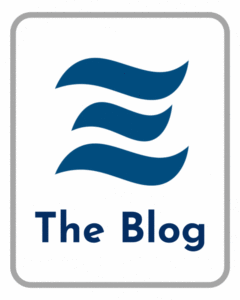 Seminars for Storytelling in Business provide the core skills for connecting with people inside and outside the organization.
Seminars for Storytelling in Business provide the core skills for connecting with people inside and outside the organization.
Research shows that people evolved as a narrative species. We pay the most attention–and learn and engage more powerfully–when we hear and tell stories.
Amazingly, you can “storify” writing in all fields (business, government, nonprofits, education), in all documents (emails, web copy, reports, proposals, and more), and at all levels (sentences, paragraphs, sections, whole pieces).
This seminar will:
- Explore how storytelling could enhance the communications of your organization with your own people, clients, vendors, customers, and others.
- Show how to develop characters to create empathy with audiences of all kinds—even for documents that do not have any obvious characters.
- Demonstrate the essential elements of storytelling, building on Aristotle’s three-part model of drama and modern research on the brain and classic stories.
- Apply those skills to business writing and communications, from emails and web copy to reports and other major pieces.
- Engage students in storytelling exercises, as a group, to start to “burn” storytelling skills into the brain.
- Provide useful templates/blueprints for using stories in different documents.
Course Overview
A great story can engage employees, build loyalty among customers, and strengthen the culture of an organization. No matter the goal, strong leaders know how to harness the power of stories to their advantage.
This course explores the value of stories, reasons to use them, methods for collecting tales, narrative patterns, character construction, and delivery skills. During this session, participants will also learn how to plan a story inventory and begin building a library of narratives.
The group will also learn the art of story spawning and the importance of story hearkening. By the conclusion of the workshop, those who attend should understand how to leverage their stories and others’ stories for a variety of purposes.
Workshop Outline
- How Stories Engage Everyone, From the Biggest Clients to the Newest Hire
It’s a truism that humans evolved as a storytelling species—that a great narrative can engage audiences emotionally. But it’s deeper than that. The narrative is the most basic form of thinking. Every day, we have 50,000 or more thoughts—and they take the form of mini-narratives. If we understand a basic 1-2-3 structure, we can master the art of great sentences, paragraphs, sections, and whole pieces.
Group activity: Explore the three-part structure of all perception and thinking, writing and storytelling. In a “one-minute presentation,” you will learn to tell your three-part story on the spot.
- Before and After—Reverse-Engineering Bland and Narrative Passages
Stories are not just “one damn thing after another,” as an eminent historian once commented. It’s not enough to record a series of actions or events. Stories are sequences with change and meaning.
Group activity: Compare a set of passages—some simple and bland accounts of events, others full-fledged stories—and identify and dissect the specific maneuvers that make stories stories.
- Finding the One Idea—Discovering What Story You Might Want to Tell
Stories are usually about lots of people and events. But they need to converge on a single idea, or else you will alienate the audience. Hollywood uses the “logline”—a short and simple statement about a story’s setup and delivery—to capture the essence of a movie. Sometimes we can’t know the “One Idea” of a story till after we have written it and struggled to find its meaning.
Group activity: Explore a process for moving from a jumble of ideas to a coherent, clear, compelling idea that will drive the story from the first word to the last.
- ‘Everything Begins With a Character’—Why People Love Characters More Than Anything Else and How You Can Give Them What they Want
All good storytelling begins with character. A good character evokes the empathy and concern of the reader, making the reader a hidden part of the story. Rendered well, characters not only lead a story but also dramatize and explain key ideas.
Group activity: Develop a compelling character out of thin air. Moving around the room, we will create a “dossier” for a character. By creating a character, we will take a major step toward building a whole story.
- Creating a Dynamic Narrative Arc—In Everything You Write
Two and a half millennia ago, Aristotle identified the key elements of a story. In our time, neuroscientists and business mavens show how these elements affect the reader as she goes about her day—working, learning, caring for family, shopping, playing, and more.
Group activity: Dissect a mini-narrative from film. We will block out the beginning, middle, and end. Building on the basic story structure, we will boost the story’s power with specific moments that define characters and struggles and move the story forward to its inevitable conclusion. We will use blueprints for specific business pieces that use these story moments.
- Story Moments—Structuring a Great Explainer, Post, Proposal, Pitch, and More
Big Data on stories—concerning takes from Sophocles to Succession—show that stories succeed best when they use about a dozen key “moments.” These moments can be found in the best ads, blogs, sales copy, pitches, and more. The challenge is not just to use these moments, but blend them seamlessly into the piece.
Group activity: Consider a series of ”fact sheets” on issues of importance to the organization. From these, we will create powerful and dynamic stories that reveal the essence of the issues at hand.
- Thinkfast—Make a Story Out of Mush, Instantly
The world, as William James once commented, often seems like “a blooming and buzzing confusion.” As noted at the beginning of this seminar, the brain automatically organizes this confusion into a coherent narrative. To succeed, we need to take control of the narratives of our work and lives.
Group activity: Work with a series of “fact sheets” on issues of importance to the organization. From these, we will create powerful and dynamic stories that reveal the essence of the issues at hand.
By the end of this course, those who attend should have a solid grasp of the power of storytelling in business and how as leaders they can develop and deliver narratives to achieve wide-ranging goals.
Following Up
In this seminar, you will learn a full suite of skills and techniques to “storify” all of your writing in your organizations—from emails and web copy to reports and proposals and RFPs … even speeches and presentations.


 Most recently, Hafner published Mother Daughter Me, a memoir of three generations of women living together under one roof. At the beginning, Hafner hoped the time together would help resolve old family conflicts like her mother’s divorce, neglect, drinking, and frequent moves. The book is honest and raw and testament to the idea that what doesn’t break, develops a new kind of resilience.
Most recently, Hafner published Mother Daughter Me, a memoir of three generations of women living together under one roof. At the beginning, Hafner hoped the time together would help resolve old family conflicts like her mother’s divorce, neglect, drinking, and frequent moves. The book is honest and raw and testament to the idea that what doesn’t break, develops a new kind of resilience.
 God is my witness. Look at the surprises that fill The Bible. God torments Job, his loyal servant. The father rushes out to greet his prodigal son. Jesus allows a prostitute to wash his feet. Jesus expels the moneychangers from the temple. When skeptics challenge Jesus to display his extraordinary powers, he refuses. These cliffhangers and surprises tease the reader.
God is my witness. Look at the surprises that fill The Bible. God torments Job, his loyal servant. The father rushes out to greet his prodigal son. Jesus allows a prostitute to wash his feet. Jesus expels the moneychangers from the temple. When skeptics challenge Jesus to display his extraordinary powers, he refuses. These cliffhangers and surprises tease the reader.